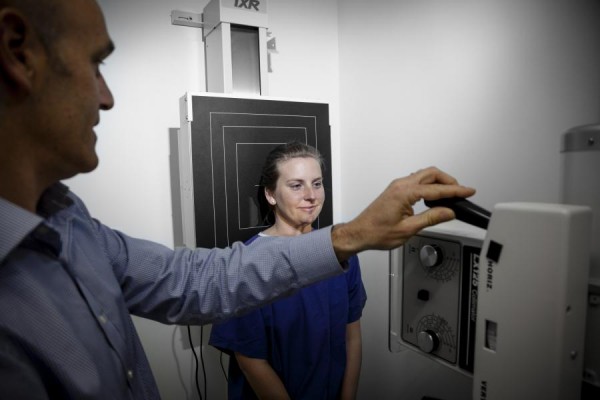What to Expect When You See a Chiropractor
A typical initial chiropractic consultation will include a thorough case history and detailed examination to determine the need and appropriateness of chiropractic care. You will be advised if further tests are required, or if referral to another health care provider would be best in your case.
Chiropractic examinations are usually carried out through light clothing or you will be appropriately gowned. Chiropractic examination may include observation (eg. posture, range of motion and gait), palpation (feeling of joint movement, muscle and soft tissue tensions), standard orthopaedic and neurological tests, along with any further tests or imaging which may be indicated (eg. x-rays, thermography, sEMG, MRI).

The major purpose of the examination is to analyse the condition of your spine and nervous system and how it is functioning, locate any areas of subluxation, and rule out any contra-indications. If your case is not suitable for chiropractic care you will be advised accordingly and referred to the appropriate health care provider.
If chiropractic care is suitable for your case, your chiropractor will detail a course of care tailored to your needs. This will usually involve a series of adjustments, each building on the ones before (see the adjustment section for more detail).
The Adjustment
The process of correcting subluxations is called an adjustment. Chiropractic adjustments are not necessarily the same thing as manipulations (although some chiropractors may use that term). Adjustments can range from the classic dynamic thrust through to very light forces and contacts, along with instrument and table-assisted delivery.
By applying a specific and precise force in the right direction and at the right time, changes in the position and motion of spinal bones can be made. Over time this process helps correct abnormal structural and neural patterns. Generally, the longer a subluxation pattern has been present, the longer it takes to fully correct.
The specific techniques chosen will depend on your age, condition and comfort levels. NZCA chiropractors are highly trained professionals and have a range of techniques to suit individuals from newborn to the elderly.
In the hands of a qualified chiropractor, adjustments carry much less risk than pain medications, anti-inflammatory drugs, and many common daily activities.
Chiropractic Results
The results of chiropractic care are different for every person as each individual is unique. Many people find they have more energy, sleep better, have greater concentration and focus, are more productive, and have a greater ability to resist disease.
Remember, regardless of the type of doctor or procedure, ultimately it is the body that does the healing. Chiropractic care is a fantastic way to optimise your body’s natural ability to adapt and heal.
The adjustment is not a specific treatment for any symptom or disease but rather improves nervous system function by restoring better motion and/or alignment to the spinal joints. Whether or not this causes a disease to subside or not is an illogical measure of the value of chiropractic. Normal spinal motion is a requirement for normal brain and nervous system function, so improving spinal function has a positive effect on the human being as a whole. A fully functioning spine and nerve system inevitably gives a better chance of health regardless of any symptoms or disease that may be present.

Chiropractic care is not a substitute for medical care, any more than medical or other form of care, is a substitute for chiropractic care. Chiropractic is not a form, or branch of medicine. Medical doctors specialise in the diagnosis and treatment of diseases. Chiropractic doctors specialise in the detection and correction of subluxations to enhance the expression of life, health, and proper function of an individual.